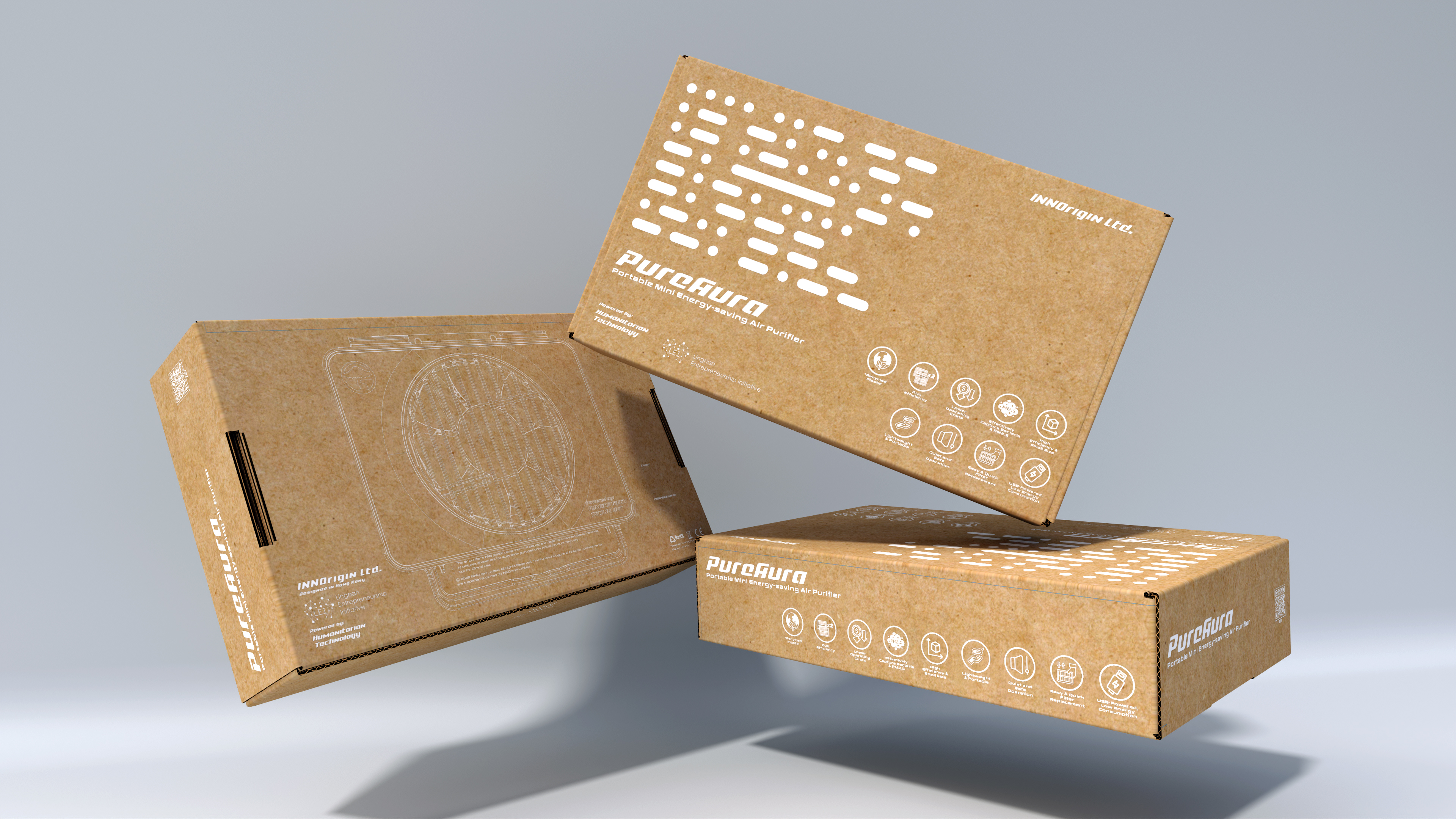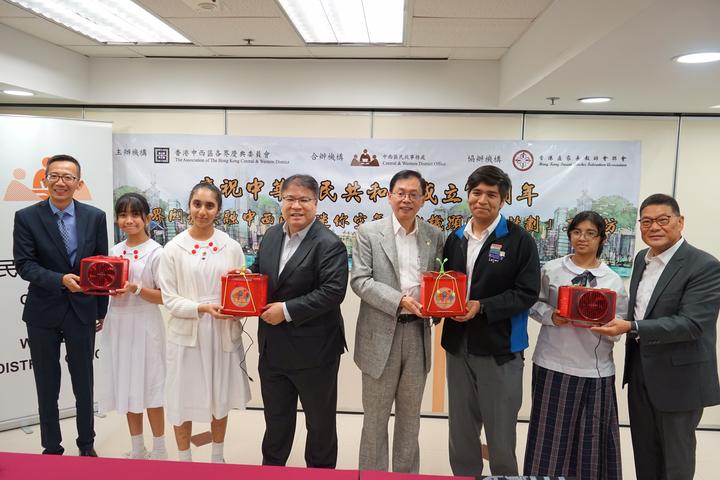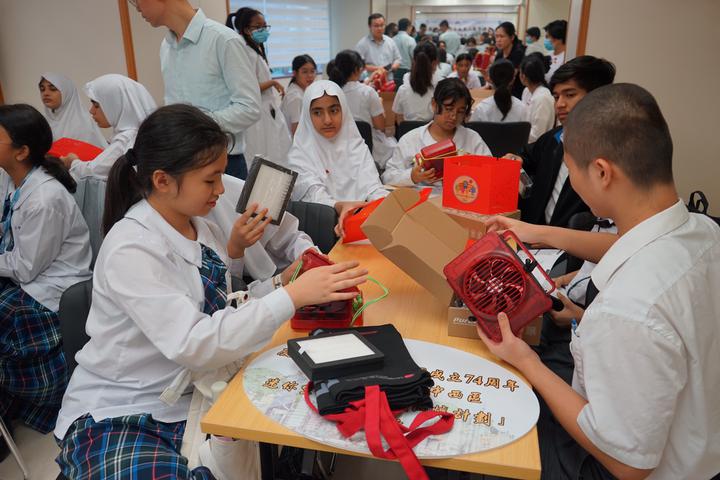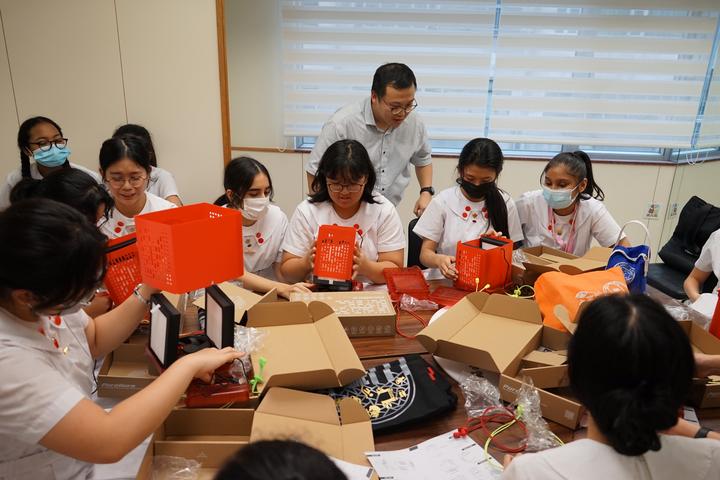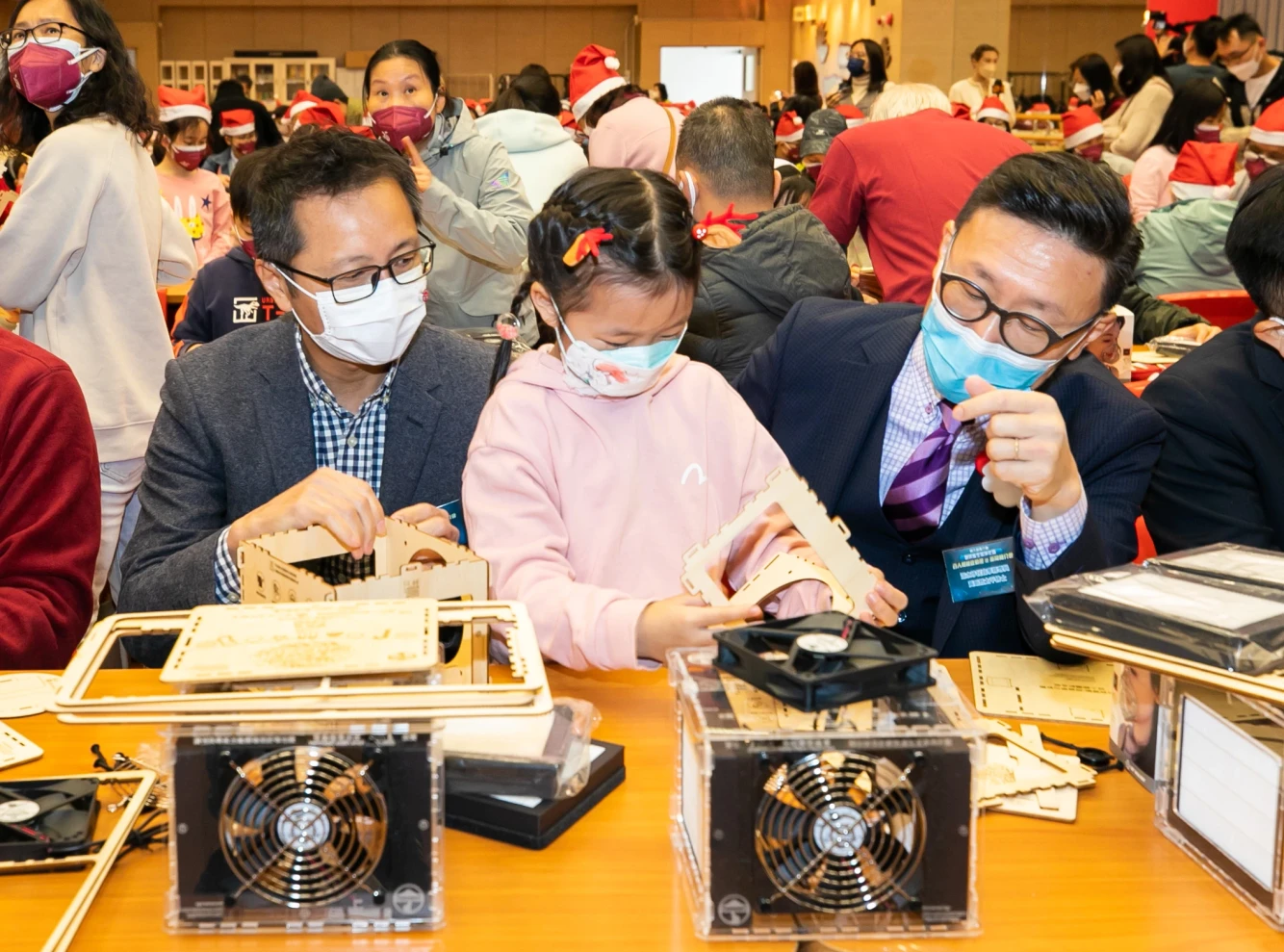PureAura
Lingnan University Develops and Distributes Free Air Purifiers to over 1,000 Families of Subdivided Flats in Hong Kong Island Central and Western District
21 Sep 2023
Lingnan University Develops and Distributes Free Air Purifiers to over 1,000 Families of Subdivided Flats in Sham Shui Po
23 Dec 2022
The living environment of subdivided flats in Hong Kong has aroused extensive public concerns. A lot of community groups and research teams are committed to providing support for improvement. The Lingnan Entrepreneurship Initiative (LEI) of Lingnan University strives for driving the development of humanitarian technology for the betterment of humankind. Under its pilot project, a low-cost mini air purifier is developed to fit in sub-divided flats. The LEI collaborated with Sham Shui Po District Office of Home Affairs Department and Sham Shui Po Residents Association Limited today (23 December 2022) to arrange volunteers to distribute 1,000 free air purifiers, spreading care to families living in sub-divided units before the Christmas.
Prof Albert Ko Wing-yin, Director of LEI said that the air purifier developed by the research team has undergone a series of field tests and is proven to be effective in reducing the indoor concentration of fine particulate matter (PM 2.5) by 80 per cent to less than 5 μg/m3. The result demonstrates an effective improvement of air quality of subdivided flats that meets the recommendation under the World Health Organization (WHO) Global Air Quality Guidelines revised in 2021. The most distinctive features of the air purifier are high efficiency, small size and low power consumption, which can address the needs of subdivided flat residents.
“The length, width, and height of the mini air purifier are less than 20cm with a total weight of only 529 grams which allows users to place it anywhere in tiny subdivided units. Moreover, the modular air purifier is made of cardboard, which is light, convenient, space-saving, and easy to assemble. The production cost is just under HK$100,” said Prof Ko. He added that the air purifier is also suitable for the use in developing countries with its compact size, low-cost, and portable design. The research team has been working with various universities in Philippines on application scenarios and supply chain models in order to explore a cost-effective way to improve indoor air quality for people in developing countries. The whole design and assemble processes are conducted by the LU humanitarian technology research team, and it showcases the diversity of innovation and technology in Hong Kong, and its commitment to global sustainable development.
Paul Wong Yan-yin, JP, Sham Shui Po District Officer of the Home Affairs Department welcomed this cross-sector collaboration. He said: “Sham Shui Po District Office has been advocating the use of technologies in meeting people’s daily needs. This programme not only improves subdivided units’ indoor air quality but also a testament to the concerted effort of the government, the community, and academia in solving real-life problems of our residents. He added that if this pilot is successful, the District Office hopes to take it further by providing all households living in subdivided units in Sham Shui Po with an air purifier by working with other stakeholders. The District Office aims to introduce more local technological solutions to serve the Sham Shui Po community in the future through more similar collaborations.”
Samuel Chan Wai-ming, BBS, MH, JP, Director of Sham Shui Po Residents Association Limited also welcomed the caregiving programme. He said: “Sham Shui Po is the focal point of subdivided units occupied by dilapidated residential buildings and the residents have limited means. Giving them high-efficiency mini air purifiers is a thoughtful arrangement.”
About 100 residents were invited to the launching ceremony. Under the guidance of LU faculty members and students, they assembled the air purifiers and most of them could completed the process within half an hour. The assembled air purifiers will be distributed to subdivided flat families in Sham Shui Po later.
Some subdivided flat families also joined the event, assembled their own air purifiers and brought them home immediately afterwards. In addition, all participants were given gift packs prepared by Sham Shui Po District Office and Sham Shui Po Residents Association Limited in celebration of Christmas.
Lingnan University Partnered with MIT D-Lab to Further Develop:
Air Purifier for Subdivided Flats in Hong Kong
source: Air Purifier for Subdivided Flats in Hong Kong | MIT D-Lab
Dec 2022
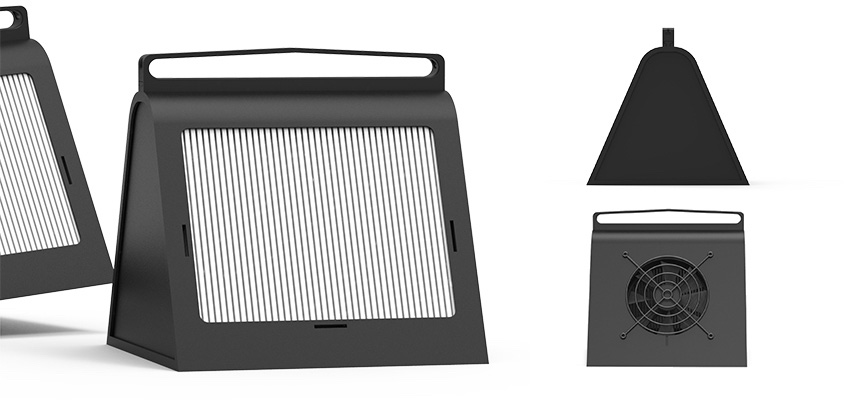
Renderings of the final air purifier prototype with perspective (left) side view (top-right) and front view (bottom-right).
Advancing the design, manufacturability, and usability of a low-cost air purifier aimed at improving the air quality in Hong Kong’s subdivided flats.
Student team
- Saloni Bedi, MIT ‘23, M.S. Integrated Design and Management
- Connie Ly, MIT ‘24, B.S. Mechanical Engineering
- Zach Sternberg, MIT ‘23, M.S. Integrated Design and Management
- Brandon Worrell, MIT ‘24, B.S. Mechanical Engineering
Community partner
- NG Aik Min, Senior Project Officer at the Office of Service-Learning (OSL)
- Lingnan University, Tuen Mun, Hong Kong ([email protected])
Location
Hong Kong

Project description
Over 220K people live in subdivided units (SDUs) in Hong Kong which are cramped with multiple constantly exposed to poor air quality, circulation, and odors. Our D-Lab team partnered with Lingnan University to further develop their concept for a low-cost air purifier to be manufactured at scale and distributed to residents. While small fans exist at low price points and portable air purifiers for high-end clientele, there is a market gap that can be addressed by making a compact air purifier that can be effective in these small spaces, which are often under 120 square feet.
The initial Lingnan prototype was made of laser-cut particle board, glued together into a box containing two high-efficiency particulate air (HEPA) filters and a computer fan powered by rechargeable USB battery pack. While this design can easily flat-pack, it would not be feasible for users to assemble and glue the puzzle-shaped pieces together.
In order to overcome these feasibility challenges, we took a step back and iterated on designs for the housing. We sought to improve the user-friendliness, compactness of the final product, compactness of the product during transportation, and durability. After in-depth brainstorming and assessment, we moved forward with a new triangular prism-shaped design.
Youtube ID
Video: Animation showing the optimized assembly of the triangle prism-shaped design inclusive of factory assembly prior to distribution as well as user assembly.
The triangle prism-shaped design for the air purifier is made up of three main injection-molded plastic components: (1) the primary shell, (2) front and back triangular walls, and (3) the handle. The primary shell is a single component divided into three walls that fold into the triangle shape. Each of the three panels of the component held the fan, the battery, and the HEPA filter respectively. In our initial prototype, the shell was three separate pieces fastened together with metal rods to create a hinge before being upgraded to a single piece with a “living hinge.” Identical triangular walls are inserted into tracks and compressed into place when the shell is folded to fully enclose the unit; these side walls originally snapped into place from the exterior, and were improved to increase durability. To hold the unit together, a D-Lab Design for Scale, MIT EC.729 Fall 2022 handle slides into a top rail. The handle also allows for portability, like a lunch box, or for the unit to be hung from a hook.

The prototypes were all 3D printed following DFM guidelines for injection-molding such as consistent wall thickness, no undercuts, and draft angle. However, large flat sheets might be more cost effective to thermoform at our targeted volume. Therefore, we also designed a negative for thermoforming and tested that manufacturing method as well. Further investigation into the cost is required due to the post-processing required in thermoforming, namely die cutting the holes and the addition heat application required to create the living hinges.
Next steps
Next steps for the design include further testing, cost analysis, and further refining DFM. Efficacy tests were performed at MIT to compare Lingnan’s prototype to the triangle design. Our design removed PM2.5 and PM10 at comparable rates to the initial prototype and the battery did not overheat when run for extensive periods of time, however there is still room for more robust testing to confirm pressure drop and HEPA filter lifespan. Additionally, quotes have been pulled for local production here in the US, but further investigation is required for production in Shenzen, where our project sponsor has recommended manufacturing. Lastly, the thermoformed design would need to be further refined to ensure its feasibility and viability as the preferred manufacturing method.





